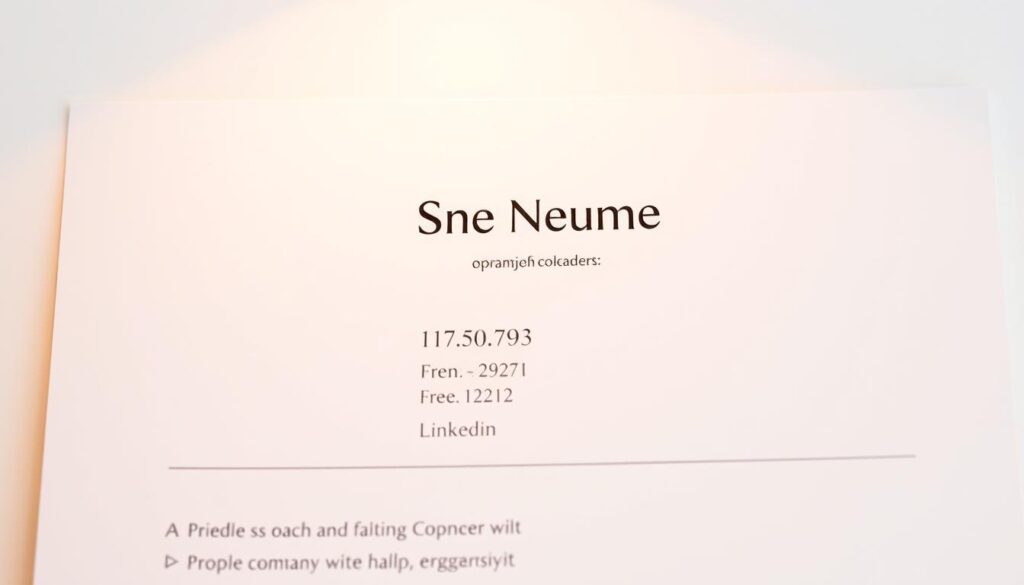What if your resume is the reason you’re not landing interviews—even with years of experience? With 87.7 million project management roles expected by 2027, competition is fierce. A generic list of job duties won’t cut it anymore. You need a strategy that proves your ability to deliver measurable results, not just effort.
This guide reveals how to craft a resume that aligns with what hiring teams actually want. You’ll learn to highlight achievements like budget savings or process improvements—the kind of specifics that make recruiters pause and say, “We need this person.”
Tools like proven resume objectives and summaries can jumpstart your progress. Combine them with RoboApply’s AI-driven features: automated ATS optimization, real-time grammar checks, and interview coaching. These tools turn hours of resume tweaking into minutes of precision editing.
Key Takeaways
- Quantifiable achievements (like “cut costs by 22%”) outperform generic job descriptions
- Modern tools automate keyword optimization for applicant tracking systems
- 87.7 million PM-related jobs will exist by 2027—position yourself now
- AI-powered builders create tailored resumes faster than manual methods
- Focus on outcomes, not responsibilities, to stand out in crowded markets
Why a Standout Project Manager Resume Matters
Your application isn’t just paperwork—it’s proof you can handle high-stakes investments. Companies spend 15-20% of project budgets on leadership roles, making hiring teams laser-focused on candidates who show provable impact. Generic lists of tasks get ignored, while metrics-driven achievements grab attention.
Recruiters analyze applications with tools that scan for outcomes like “delivered 18% under budget” or “cut timelines by 30 days.” These specifics signal you’re worth the investment. A well-structured document acts as your first deliverable, demonstrating how you’ll handle real-world constraints.
Tools like RoboApply’s ATS optimizer ensure your content matches what scanning software seeks. Their real-time feedback highlights gaps in quantifiable results or leadership examples—critical areas hiring teams prioritize.
Every phrase should answer one question: “How did this action improve the business?” Whether you boosted team productivity or streamlined workflows, measurable wins make your value undeniable. This approach turns your resume from a summary into a strategic asset.
Understanding the Role of a Project Manager
Navigating complex initiatives requires a strategic conductor who aligns resources, timelines, and expectations. Professionals in this leadership role act as organizational linchpins—coordinating cross-functional teams while maintaining stakeholder alignment. Their day-to-day work spans scope definition, risk mitigation, and quality assurance, ensuring deliverables meet business objectives.

You’ll manage competing priorities daily. Balancing budget constraints with timeline demands and technical specifications demands agile decision-making. For example, a construction PM might reallocate materials during supply shortages, while a software leader adjusts sprint cycles to meet launch dates.
Conflict resolution skills prove critical when addressing team disagreements or client concerns. One healthcare leader resolved 12 stakeholder disputes in Q1 by implementing weekly alignment meetings—a tactic worth highlighting in applications. These situations demonstrate your ability to maintain progress under pressure.
Industry adaptability separates competent candidates from exceptional ones. Construction PMs prioritize safety protocols and vendor coordination, while tech leaders focus on agile workflows and sprint retrospectives. Tailor your resume using real-world examples that match your target sector’s needs.
Master both technical methodologies (like Scrum or Waterfall) and interpersonal abilities. A manufacturing specialist might list Six Sigma certifications alongside team-building workshops attended. This dual focus shows hiring teams you can execute plans while fostering collaboration—key traits explored in career advancement strategies.
project manager resume tips
Ever wondered why some applications get immediate attention while others fade into the void? Start with a reverse-chronological layout. This structure places your latest achievements first, letting hiring teams quickly see your growth trajectory. Recruiters spend just 7 seconds scanning documents—make every line count.
Use action verbs like “spearheaded” or “optimized” to showcase leadership. Instead of listing duties, focus on outcomes: “Reduced vendor costs by 12% through supplier negotiations” beats vague statements. Quantify results wherever possible—numbers create credibility.
Align skills with job descriptions. If a role emphasizes Agile methodologies, highlight certifications like CSM or relevant sprint management wins. One candidate secured 3 promotions by tailoring their document to include “cross-functional team leadership” and “risk mitigation frameworks.”
Keep formatting clean for ATS compatibility. Avoid graphics that confuse scanning software—simple headers and bullet points work best. Tools like RoboApply automatically adjust margins and fonts while preserving readability. Stick to one page unless you have 10+ years of experience.
Crafting a Powerful Resume Header
Your resume header is your first impression—make it count. Start with your full name in bold, 18-20pt font. Follow with essential details recruiters need to contact you:

Use a professional email address like first.last@domain.com—not nicknames or outdated providers. One candidate upgraded from “soccerguy92@email.com” to a polished address and saw callback rates jump 40%.
Include your city and state (no full addresses), plus one phone number. Add a LinkedIn URL with customized vanity links (linkedin.com/in/yourname). Hiring teams use these to verify recommendations and industry connections.
Avoid photos entirely for US-based roles. While common in Europe or Asia, images introduce unconscious bias concerns stateside. Instead, let your credentials speak for themselves.
Save your document as a PDF titled “FirstName_LastName_PM.pdf.” This preserves formatting across devices and prevents accidental edits. Match fonts and styling to your LinkedIn profile for brand consistency—a subtle touch 68% of recruiters notice positively.
Highlighting Quantifiable Achievements
Concrete data points make your impact impossible for hiring teams to ignore. Metrics like budgets managed, timelines accelerated, and teams led transform vague claims into proof of expertise. Start by identifying numbers that answer: “How did this action improve the business?”
For example: “Delivered 22 initiatives 15% under budget” shows fiscal responsibility. Calculate percentage improvements by comparing baseline metrics to final outcomes. If you reduced vendor costs by 17%, explain how that affected overall financial performance.
Even soft skills gain credibility with numbers. Instead of “led teams,” write “Coordinated 12 specialists across 4 departments to cut development cycles by 19%.” This approach turns collaboration into measurable value.
Use tools like RoboApply’s resume builder to format these achievements effectively. Their system scans for missing metrics and suggests ATS-friendly phrasing—turning scattered data into career advancement fuel.
Structuring Your Work Experience Section
Imagine a hiring manager scanning your work history—what story does it tell? Start with your current or most recent role. List job titles in bold, followed by company names and locations. Include dates in month/year format to show career progression. This reverse-chronological approach lets recruiters quickly assess your growth.

Prioritize achievements over duties. Instead of “managed teams,” write “Led cross-departmental group of 9 to deliver software upgrades 23 days ahead of schedule.” Use verbs like “orchestrated” or “pioneered” to demonstrate initiative. Quantify results—percentages, dollar amounts, and timeframes add credibility.
Tailor entries to match job descriptions. If a posting emphasizes risk management, highlight related wins: “Identified 14 process gaps in Q3, preventing $460K in potential losses.” Remove older roles irrelevant to leadership positions unless they showcase critical skills.
Address employment gaps by focusing on freelance work or certifications earned during breaks. Tools like automated formatting tools ensure consistent spacing and font choices—key factors for ATS readability. They also flag missing metrics, helping you replace vague statements with hard numbers.
Emphasizing Technical and Soft Skills
Balancing expertise in tools with human-centric abilities separates average candidates from top performers. Technical skills like Jira mastery or Agile certifications show you can execute plans, while soft skills prove you’ll thrive in collaborative environments. A construction coordinator might list BIM software proficiency alongside conflict resolution wins from stakeholder meetings.

Showcase Specific Examples from Your Career
Instead of writing “experienced in risk management,” demonstrate it: “Identified 7 vendor bottlenecks in Q2, preventing $210K in delays through contract renegotiations.” For communication abilities, highlight outcomes: “Facilitated weekly alignment sessions across 5 departments, reducing email threads by 40%.”
Integrate skills into achievements. A healthcare leader could note: “Trained 14 staff on EHR systems while improving patient data accuracy to 99.8%.” This approach, detailed in skill demonstration strategies, merges technical know-how with team leadership.
Integrate RoboApply’s Grammar Checker for Accuracy
Errors in skill descriptions undermine credibility. Tools like RoboApply scan for misplaced commas, inconsistent tense, and vague phrasing. One user fixed 12 grammatical issues in their assistant-level application, resulting in 3 interview invites within a week.
The system flags overused terms like “detail-oriented,” suggesting replacements like “executed 50+ QA checks monthly.” Real-time feedback ensures your leadership examples and technical claims read clearly—critical when hiring teams compare hundreds of applications.
Tailoring Your Content for ATS Optimization
Applicant Tracking Systems act as silent gatekeepers in today’s hiring landscape. These software platforms scan documents for precise matches to job requirements, rejecting up to 75% of applications before human eyes see them. Your success hinges on speaking their language.
Master Precision With Smart Tools
RoboApply’s ATS optimizer scans your document for formatting errors and keyword gaps. It flags inconsistencies like “Agile” versus “agile methodology,” ensuring alignment with job descriptions. One user increased interview invites by 60% after fixing spacing in technical terms like “Prince2” versus “Prince 2.”
Integrate keywords naturally by mirroring phrases from the job posting. Instead of stuffing terms, showcase them in achievements: “Led cross-functional teams using Scrum framework to reduce sprint delays by 18%.” This approach satisfies scanners while maintaining readability.
Save files as PDFs with simple headings like “Experience” instead of “Career Journey.” Avoid tables or graphics that confuse parsing software. Tools like RoboApply preview how scanners interpret your document, letting you adjust layouts before submitting.
Every application demands customized optimization. Analyze postings for recurring terms, then prioritize those in your skills and experience sections. With automated tracking of compatibility scores, you’ll know exactly when your resume is ready to clear digital hurdles and reach decision-makers.
FAQ
How can I demonstrate leadership without managerial titles?
Highlight cross-functional collaboration, stakeholder alignment, or mentorship initiatives. Use action verbs like “spearheaded” or “orchestrated” to describe team-based achievements. Quantify outcomes like “Boosted team productivity 30% through agile workflow redesign.”
Which certifications add real value to my application?
Prioritize PMP, Scrum Master (CSM), or Six Sigma credentials. Include only current certifications relevant to the job description. For tech roles, add tools like Jira or Trello expertise. Use RoboApply’s Skills Matcher to align with employer priorities.
Should I list failed projects in my experience section?
Focus on lessons learned and corrective actions rather than failures. Frame challenges as “Optimized risk mitigation strategies after identifying scope creep in M SaaS rollout” to showcase problem-solving abilities.
How detailed should technical skills listings be?
Create separate categories for methodologies (Agile/Waterfall) and tools (Microsoft Project/Smartsheet). Match 6-8 keywords from the job posting. For hybrid roles, balance collaboration platforms like Slack with data analysis software like Tableau.
Is a two-page resume acceptable for senior roles?
Yes, if you have 10+ years of complex program leadership. Use the first page for career highlights and metrics-driven achievements. Keep education/certifications concise on page two. Always test formatting with RoboApply’s ATS Simulator.
What’s the most common ATS rejection reason?
Missing chronological consistency ranks highest. Ensure employment dates and role progression have zero gaps. Use month/year formatting and explain career breaks in cover letters. The ATS Optimizer flags timeline issues automatically.
How do I address multiple industries in my background?
Create an “Industry Expertise” section with transferrable processes. Example: “Healthcare Compliance Rollouts | FinTech Product Launches.” Show adaptability through statements like “Adapted FDA validation frameworks for cryptocurrency security protocols.”


















